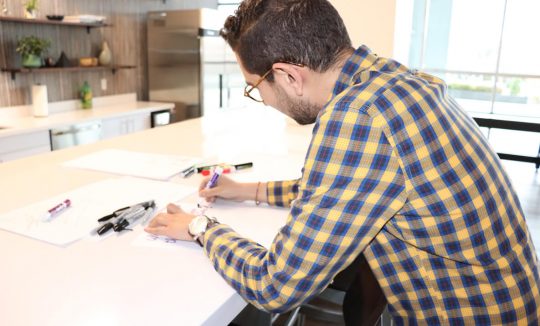
Design thinking is the cornerstone of innovation and digital transformation. This human-centered approach to problem solving is reshaping the way businesses operate and respond to increasing competition and digital disruption. Traditional product management strategies make it difficult for organizations to pivot according to changing customer needs; design thinking eliminates this challenge through an iterative process that helps your business keep pace with changing customer expectations and mounting global competition.
What is Design Thinking?
In the simplest of terms, design thinking is a methodology that uses creativity and innovation to fuel business solutions. Employing a user-centric approach, design thinking searches for practical solutions to customer pain points–allowing companies to dig deeper into the customer journey to uncover new ways of improving a product or service.
Why Design Thinking?
Many successful companies, including AirBnb, Google, IBM, and Apple, have embraced design thinking to enhance creativity and shorten development cycles. Design thinking has helped companies produce tremendous results, including:
- Faster time to market – Design thinking can fast track your development process, enabling you to release must-have products that can help you gain up to 5 times the market share.
- Increased Customer Loyalty – Design thinking helps companies build compelling products that are more in-tune with customer needs and expectations. This distinction can become a competitive advantage that can help your company retain and attract more loyal customers.
- Improved Work Culture – Design thinking is a powerful tool for building focus and fostering collaboration across teams. In fact, the adoption of team-based processes has led 71% of organizations to report improved working culture.
When 10Pearls applies design thinking principles to our product innovation services, we follow 5-step, solution-oriented process:
 Empathize
Empathize
The first and most important step of design thinking is developing a clear understanding of your customers. Since design thinking is a human-centered approach, we collect qualitative data on your end user. This means getting to know how your audience thinks, feels, and acts. We engage with and observe users to gain perspective of user needs, values, and motivations.
Define
We synthesize the user research and qualitative we’ve gathered to determine the most important customer pain points and underlying problems. More often than not, your team will be able to identify multiple problems, some more crucial than others. Narrow down your findings, then, develop a problem statement that encourages action and targets user needs.
Ideate
During this stage of design thinking, we engage in brainstorming and mind mapping sessions to generate possible solutions. To encourage maximum creativity and innovation, we interpret your problem in as many ways as possible, refraining from passing judgements or overlooking ideas, no matter how bizarre they may seem. It’s critical to include stakeholders from across the organization, with different responsibilities and perspectives, during this phase.
Prototype
The prototype stage is all about evaluating your ideas, seeking out those that offer a practical and feasible solution to the customer. Through physical prototypes, storyboards, and role playing exercises, your team will have the opportunity to create scaled down versions of potential products. This process allows for cost assessment and rapid feedback without the loss of significant time and resources.
Test
Use your audience to gain relevant feedback and learn what works best. At this stage, your team may find the need to refine and iterate prototypes and potential products based on customer feedback and validation. Once all possibilities have been assessed, implement the best possible solution.
Over the last ten years, design driven companies have outperformed the S&P Index by 219%.
To take advantage of the capabilities and opportunities that design thinking has to offer, read about our Design Studio, or schedule a discovery session with our design team today.